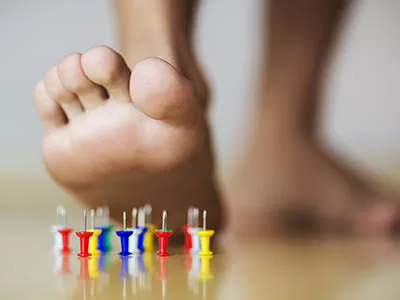
Inflammation, Friend or Foe
When your body encounters things like viruses, bacteria, or suffers an injury, it activates your immune system. Your immune system then activates its first responders, the inflammatory cells and a group of substances that stimulate the inflammatory cells, called cytokines. This response is called acute inflammation.
Acute inflammation is our friend, causing the fighter cells to go into high gear trapping and destroying bacteria and other offenders, while healing injured tissue. This activity usually causes pain, swelling, bruising or redness, evidence that inflammation is occurring. But these symptoms fade away as the healing process completes.
Acute inflammation is an essential part of your body’s healing process. But if inflammatory cells stay too long, it may lead to a condition we call chronic inflammation.
Chronic inflammation is a persistent immune response and can occur from exposure to toxins, or other causes such as chronic stress, obesity, and autoimmune disorders. Over time, chronic inflammation can become our foe. Instead of moving in, healing the problem, and then returning to normal, the inflammation response persists. It's thought that this chronic state of inflammation can lead to numerous health problems, including heart disease, arthritis, depression, Alzheimer's disease, and even cancer.
Since chronic inflammation is to be avoided, here are Seven Steps to Reduce or Avoid Chronic Inflammation:
Step #1: Change your diet.
Choose to eat more foods that have anti-inflammatory properties, such as:
- Oily fish, such as mackerel, salmon, or sardines.
- Leafy greens like spinach and kale.
- Olive oil.
- Tomatoes.
Eat fewer foods that may increase inflammation:
- Fried foods, including many fast-food items.
- Cured meats with nitrates, such as hot dogs.
- Highly refined oils and trans fats.
- Refined carbohydrates, such as sugar, pastries, or white bread.
Step #2: Get moving!
Aerobic exercise, like brisk walking, stretching and resistance training can lower markers of chronic inflammation. Physical therapy can help here if you have an area of the body that needs healing or reconditioning, or if you need help finding the best exercises to help you reduce inflammation.
Step #3: Manage your weight.
Reducing wight, especially abdominal fat, which can produce pro-inflammatory chemicals, can reduce inflammation.
Step #4: Get enough sleep.
Inadequate sleep not only robs you of energy and productivity it also elevates inflammation.
Step #5: Stop smoking.
Kicking the habit can result in a dramatic reduction in inflammation levels within just a few weeks, experts say.
Step #6: Limit alcohol use.
When it comes to inflammation, keeping alcohol use within moderate levels (no more than 2 ounces per day) is your best bet.
Step #7: Conquer chronic stress.
Chronic stress can spark the development of inflammation and cause flare-ups of problems like rheumatoid arthritis, cardiovascular disease, depression, and inflammatory bowel disease.
Whether you’re aiming to prevent cancer, heart disease, diabetes, dementia, or other conditions connected to chronic inflammation, the sooner you incorporate these seven steps into your life, the better!
Read more about reducing inflammation on the Clevland Clinic website: Inflammation: What Is It, Causes, Symptoms & Treatment (clevelandclinic.org)
Read more about reducing the pain of many conditions on our Conditions web page: Painful Conditions | Superior Physical Therapy (thesuperiortherapy.com)



